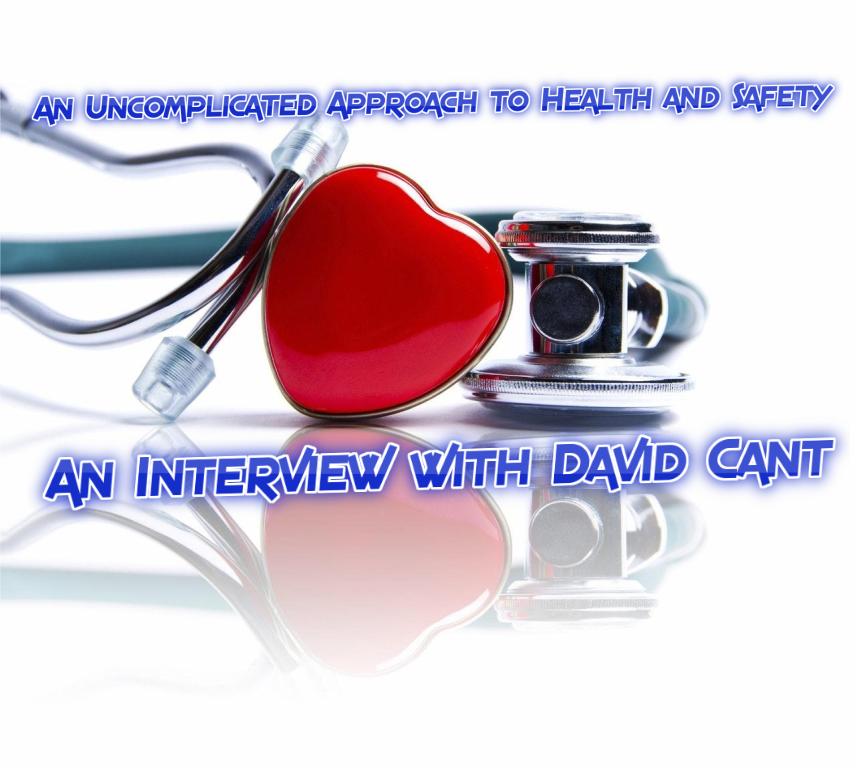Welcome to the third in the series of Construction Interviews. If you want to read the first two please click on the links.
What Is Happening In Construction – Rob Simmons
The Harley Davidson Bricklayer – Clive May
We are Interviewing David Cant, Director at Veritas Consulting. You can find David on LinkedIn and Twitter.
INTERVIEW WITH DAVID CANT
 CMM: Thank you, David, for agreeing to be interviewed. Let’s start by telling us a little bit about yourself.
CMM: Thank you, David, for agreeing to be interviewed. Let’s start by telling us a little bit about yourself.
DAVID: I’m Married and Dad to one. I prefer wine to beer and collect the corks, I’m also intrigued by human behaviour – in essence, I’m a people watching expert. I entered the construction industry over 30 years ago as a claw hammer juggler (Apprentice Carpenter and Joiner) where I progressed to site management. I have been involved in the Health and Safety industry for 15+ years and I’m a chartered member of the institution of occupational safety and health (IOSH). In my spare time, I enjoy watching Rugby, travelling, Spain and meeting great people.
CMM: David what motivated you to pursue a career as a Health and Safety Consultant?
DAVID: As with most health and safety professionals I fell into the sector by accident and it became a natural progression. However, one of the main things that attracted me to health and safety was simply the diverse nature of the construction industry jargon, how people tackled all the rules and regulations (which can seem complex) and how they could be simplified. I like to keep things simple so I aim for simplicity, always.
CMM: We often hear about Contractors saying that Health and Safety is unnecessary and too expensive to implement. How would you respond to a business owner who makes this kind of statement?
DAVID: If business owners think health and safety is expensive, they wouldn’t like to try an accident. Often businesses do not realise the significant benefits such as reduced costs, reduced risks on the business, increase in productivity because employees are healthier, happier and better motivated. The key thing is to help make business owners realise that Health and Safety isn’t a set of hoops to be jumped through – it’s something that can become self-regulating in some ways. For example, if workers are involved and engaged with reporting on the hazards they face and working in a certain way, then eventually it becomes socially unacceptable not to. It’s about helping business owners make health and safety such a core part of their business working culture, so it becomes a natural thing to do.
CMM: Tell us a little about how new technologies are set to change the Construction sites within the UK.
DAVID: There is increasing popularity of wearable devices and smart PPE with sensors that monitor workers activity in real-time, this includes collecting biometric data designed to measure signs of poor health among workers. Another great simple idea of which is on the rise are wireless tags affixed to machinery and sewn into clothing like hi-vis vests or hard hats, this enables people and vehicles become “aware” of each other. If the tag attached to a person comes too close to the tag attached to a vehicle, a loud alarm sounds in the cab and outside, giving everyone an additional indication that they are in imminent danger. Many safety professionals have begun turning to technology and the Internet of Things (IoT) to improve workplace health and safety but like any new innovation, these things are expensive. Smart PPE is definitely an important piece of technology to watch.
CMM: In your opinion is Health and Safety a tick box exercise?
DAVID: No, it’s about making sure people go home to their families safely. However, Health and Safety can seem like a tick box exercise, the key is to not get caught in the trap of just completing forms, tick sheets. When a health and safety management system becomes a checklist process people switch into auto-pilot, to the point, that they perceive as long as everything on the checklist is ok – everything is ok. That’s not ok. People need to look beyond the checklist otherwise the focus is on managing the ticking process rather than managing actual risks the workers face. That being said, there is still an important role for people to play in checking a safety management system. However, those that do need to take a holistically approach to everyday processes.
CMM: Health and safety procedures generate a lot of sighing and they could be viewed as boring. Is there anything you could suggest to make the process of implementation more enjoyable?
DAVID: It’s true Health and Safety have a reputation for being among the duller of subjects. Engage workers, get them involved by allowing them to input and take ownership. They often see things differently than the person writing the procedures. There are many different techniques such as quizzes, board games, however, one technique I find simple and effective is to include spelling mistakes in a new procedure or process, workers will be itching to tell you they spotted a grammatical error in the procedure. When this happens you’ve got their attention of which in turn helps to develop a health and safety culture.
CMM: On another note David. Who is going to win the Six Nations Rugby this year?
DAVID: England of course. (Oops! Apologies to Welsh fans – This Interview was conducted before the deciding match).
CMM: Thank you so much, David, for taking the time to talk to us.

